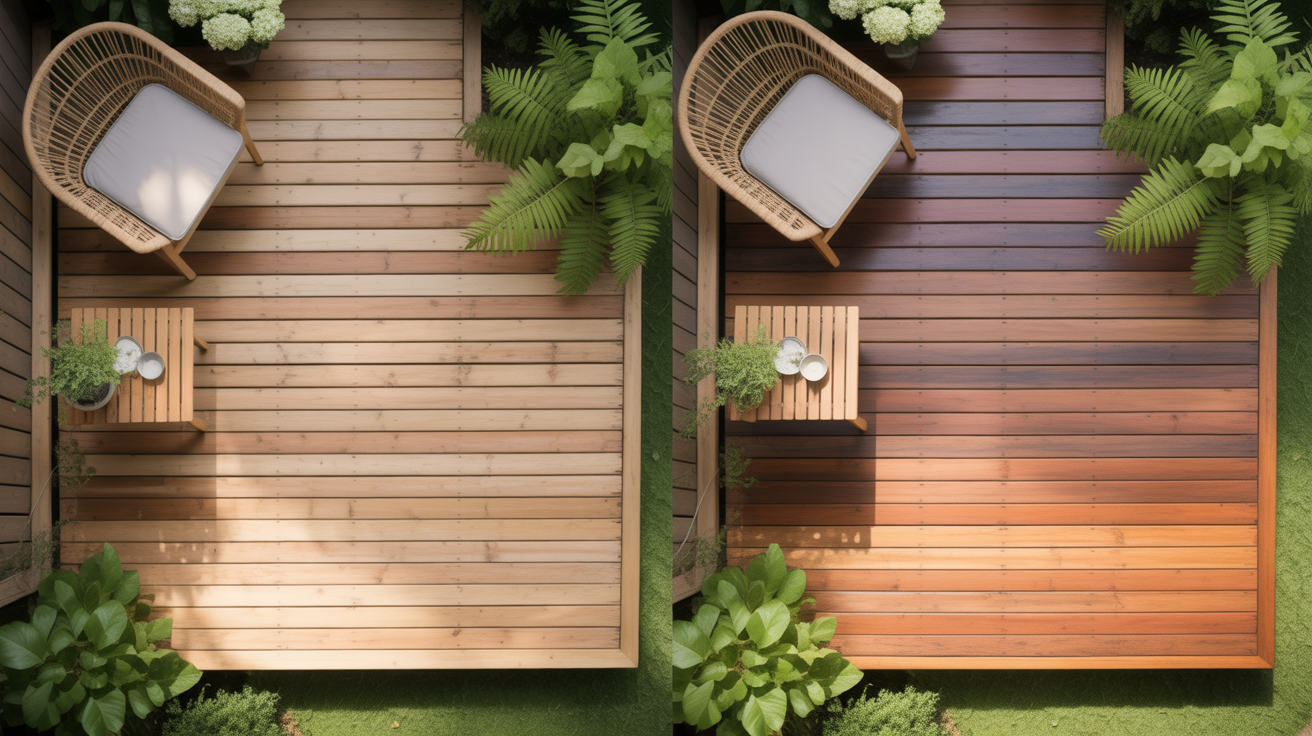Choosing the right stain for your deck can be confusing with so many opinions out there.
Some people prefer transparent stains to highlight the wood’s natural grain, while others go for semi-transparent stains for added color and protection. So, which should you choose?
I’ve looked into what homeowners and DIYers recommend and will help you sort it out. You’ll learn how each stain looks, how long it lasts, and what kind of care it needs.
I’ll also share what works best in different conditions, like sunny or shady areas.
By the end, you’ll feel confident in choosing the right stain for your deck. Let’s break it down.
What Is a Transparent Stain?
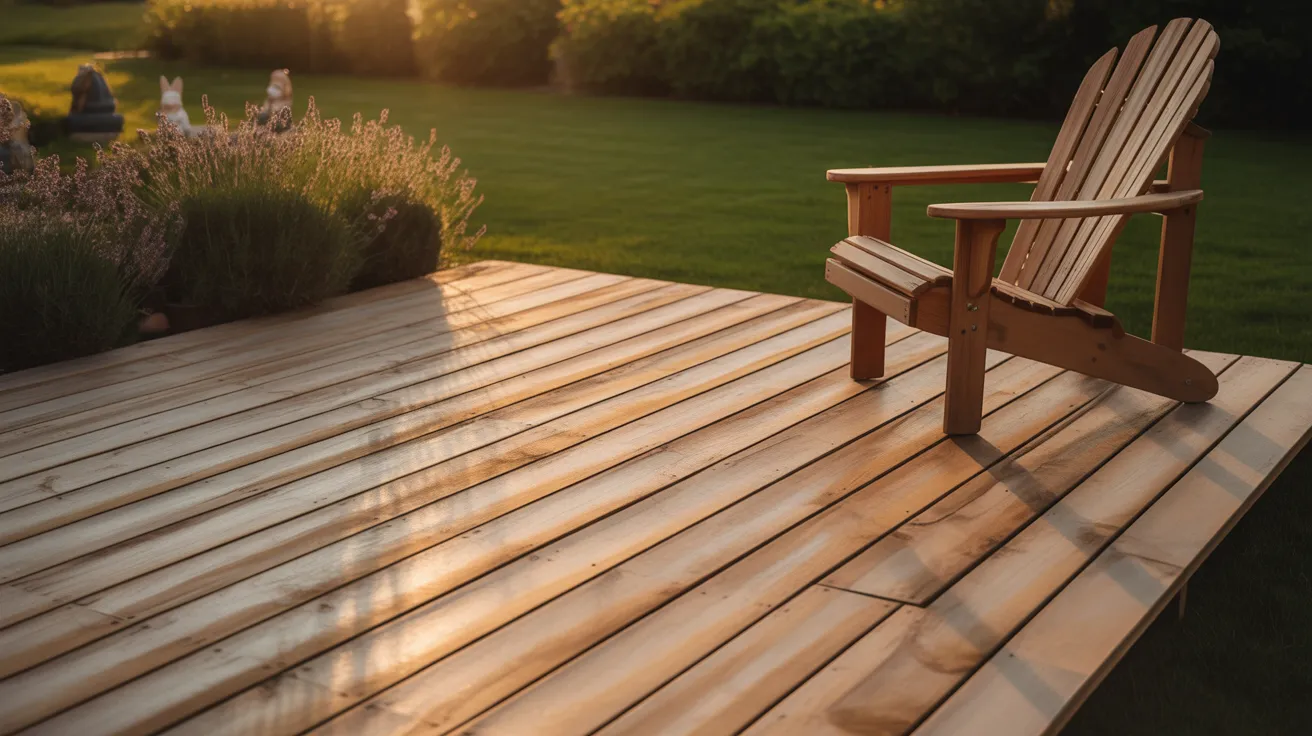
A transparent stain is a type of wood finish that lightly coats the surface while still showing off the natural look of the wood.
It has little to no color added, so the grain, texture, and unique features of the wood stay visible.
Many people choose this option when they want a more natural appearance or when the wood itself is already attractive.
This kind of stain offers basic protection against sunlight and moisture, but it doesn’t last as long as other types.
It may need reapplying more often, especially in areas with harsh weather. Still, it’s a favorite for those who enjoy a more natural or rustic feel without hiding the wood underneath.
If you’ve got a newer deck or high-quality wood you want to show off, transparent stain keeps things looking clean and simple while giving a light layer of defense.
What Is a Semi-Transparent Stain?
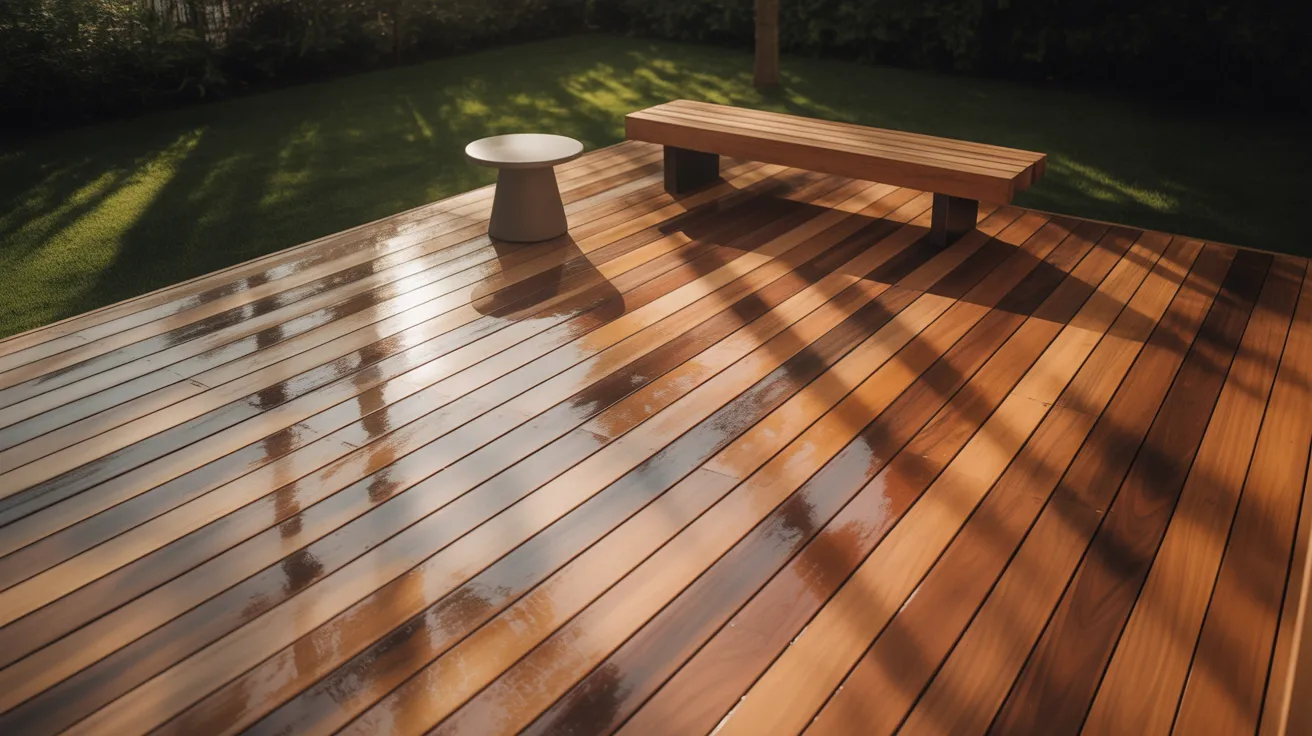
A semi-transparent stain adds a bit more color to the wood than a transparent one, but it still lets some of the natural grain show through.
It gives your deck a slightly tinted look while keeping the wood’s character visible.
Many people pick this type when they want a little more color and longer-lasting protection.
This stain soaks into the wood and creates a stronger barrier against sunlight, rain, and general wear.
Because of this, it tends to last longer than transparent stains and often needs fewer touch-ups over time.
If your deck is a bit older or has some flaws you’d like to tone down, but not cover completely, a semi-transparent stain might be the right fit.
It’s a popular choice for adding color while still keeping that woodsy, natural look.
Comparing Transparent vs. Semi-Transparent Stains
When choosing a deck stain, it’s important to understand the differences between transparent and semi-transparent options. Below is a quick comparison to help you decide which is best for your needs:
1. Aesthetic Appeal and Wood Visibility
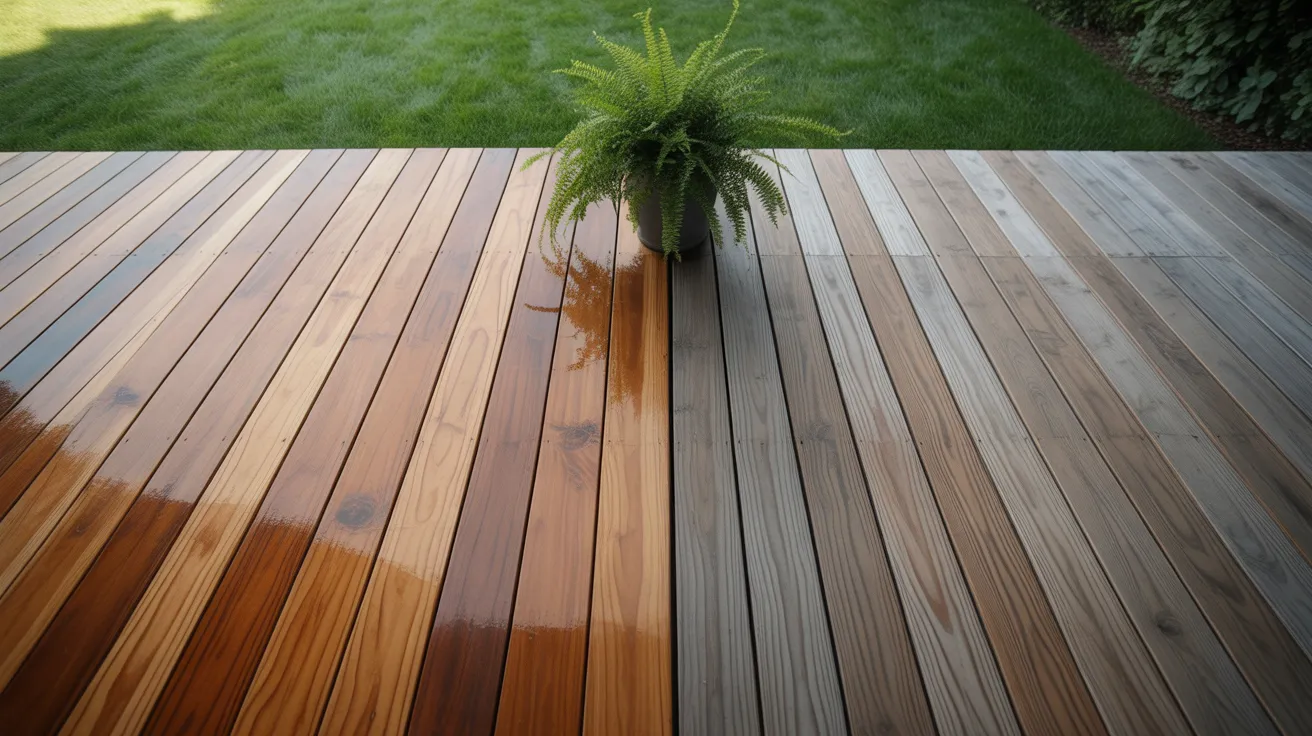
Your deck’s appearance is important, and the right stain can make all the difference.
Transparent Stains
Transparent stains allow the natural beauty of the wood to shine through.
You’ll see the grain, texture, and color variations, giving a clean, simple, and natural look. This is perfect if your wood is in great condition.
Semi-Transparent Stains
These stains still show the wood’s grain but add a layer of color that enhances the overall look.
They’re great for older decks or those with minor imperfections, as they provide an even appearance without hiding the wood’s natural details.
Many homeowners with newer or high-end wood prefer transparent stains, while those looking for more color or with older decks tend to choose semi-transparent stains.
2. Ease of Application and Maintenance
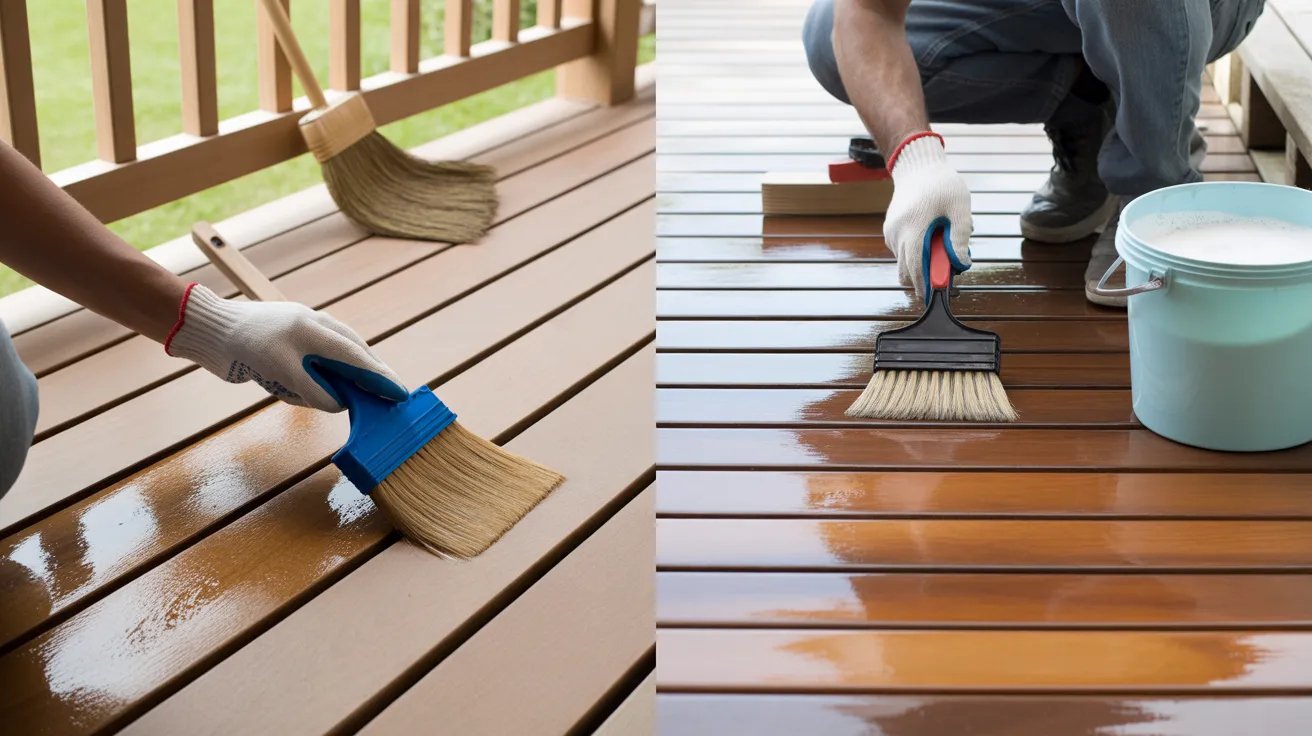
Applying stain might seem easy, but the application process and reapplication frequency can vary significantly.
Transparent Stains
Transparent stains are easier to apply as they soak in quickly and don’t show brush marks.
They’re also more forgiving if you miss a spot or overlap strokes. However, since they offer lighter protection, you may need to reapply every 1-2 years, especially in sunny or wet areas.
Semi-Transparent Stains
Semi-transparent stains require a bit more effort. The added color makes it important to apply evenly to avoid blotchy spots.
On the plus side, they usually last longer, up to 3-4 years, so you won’t need to reapply as often.
Tips for Both Stains: Homeowners recommend keeping the deck clean with regular sweeping and occasional washing. Also, check for worn spots each season and touch up as needed to maintain both appearance and protection
3. Cost Considerations
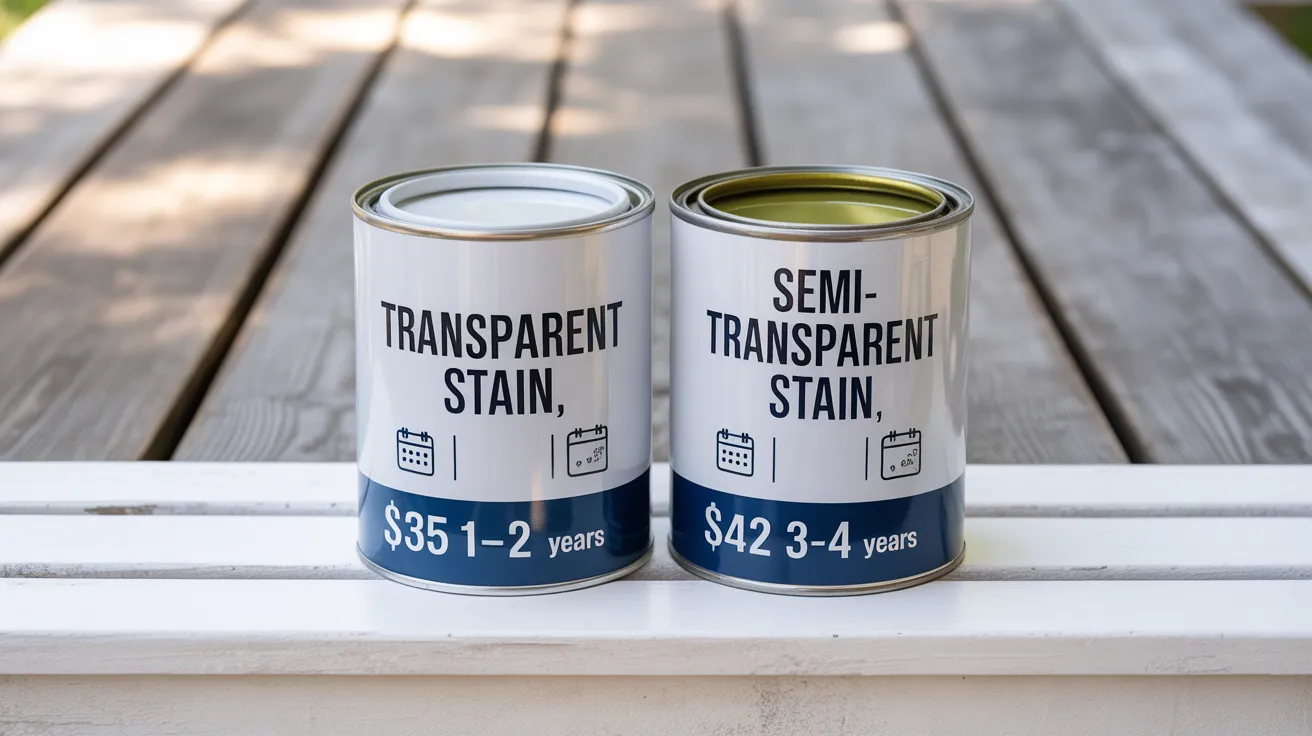
Cost is a significant factor when choosing a deck stain, and it’s not just about the initial price. This is how the costs of transparent and semi-transparent stains stack up:
Transparent Stains
Transparent stains are usually cheaper per gallon, making them a good choice for newer decks or high-quality wood.
However, since they wear out faster, you may need to reapply every 1-2 years, which can increase the overall cost over time.
Semi-Transparent Stains
Semi-transparent stains typically cost a bit more upfront, but they last longer, often 3-4 years, meaning fewer reapplications and lower long-term expenses.
Considerations: Homeowners often balance the look they want with the time and money they’re willing to invest. Those with busier schedules or older decks usually prefer semi-transparent stains for better color, protection, and fewer reapplications.
In the end, while transparent stains save money initially, semi-transparent stains may offer better overall value.
Transparent vs Semi-Transparent Stain: A Quick Comparison
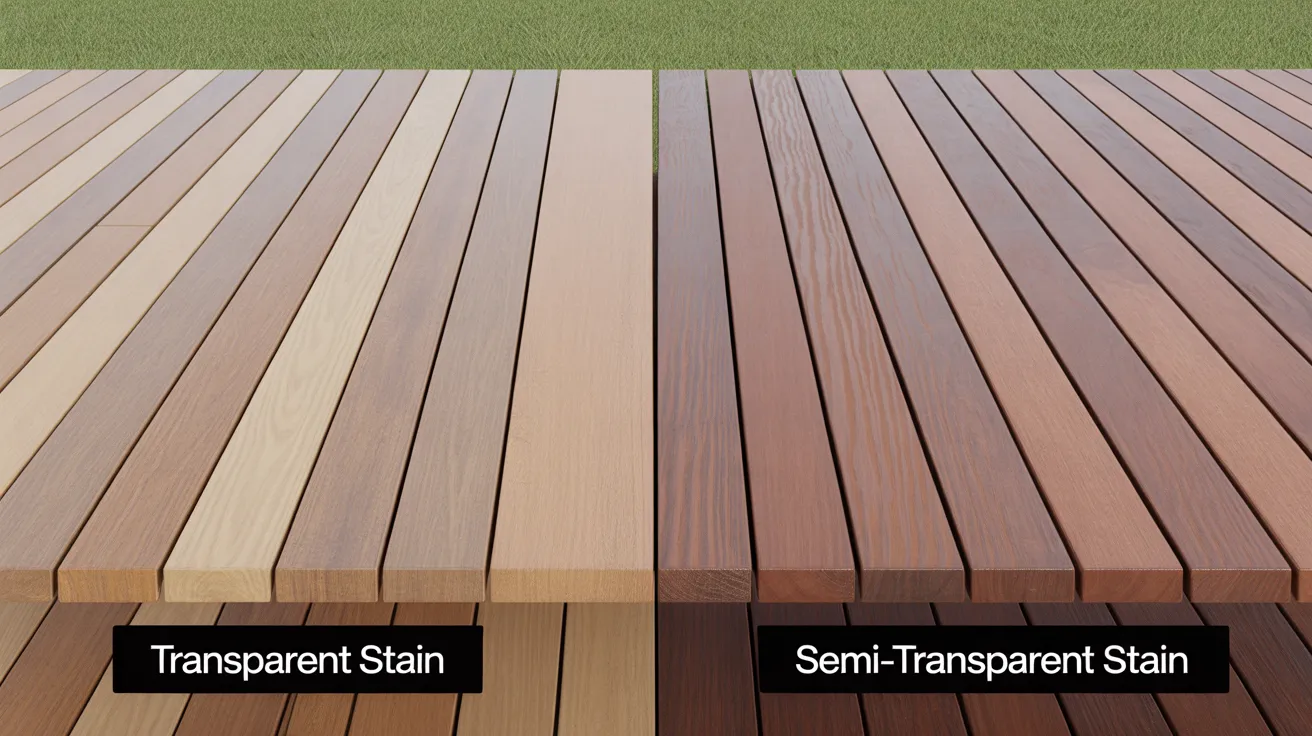
This simple table highlights the key differences between transparent and semi-transparent stains, based on feedback from homeowners and DIYers.
| Feature | Transparent Stain | Semi-Transparent Stain |
|---|---|---|
| Wood Grain Visibility | Fully visible | Partially visible |
| Color | Barely any | Light to moderate tint |
| Protection Level | Basic protection | Moderate protection |
| Durability | Shorter lifespan, needs more upkeep | Longer-lasting, less frequent reapplication |
| Best For | Newer or high-quality wood | Older decks or light coverage need |
| Common Use | Showing off wood’s natural beauty | Balancing color and protection |
If you’re aiming to show off your deck’s grain or want a little extra color and wear resistance, this table can help you weigh the differences quickly. It’s all about what matters most to you- appearance, upkeep, or both.
Key Factors to Consider When Choosing a Stain
Picking the right stain isn’t just about color; it’s about what works best for your deck’s needs. Below are some important things to keep in mind:
- Type and age of wood: Newer or high-quality wood looks great with a transparent stain that lets the grain show. Older or worn wood might benefit from a semi-transparent stain to even out its appearance.
- Desired appearance: If you want a natural, bare-wood look, transparent is the way to go. If you prefer a bit of color while still seeing the grain, go for semi-transparent.
- Climate and sun exposure: Decks in hot, sunny areas may need the added protection of a semi-transparent stain. Transparent stains offer less UV shielding.
- Maintenance and reapplication needs: Transparent stains need more frequent touch-ups. Semi-transparent stains tend to last longer.
- Deck usage and traffic: Heavily used decks benefit from the added durability of semi-transparent stains.
Which One Should You Choose?
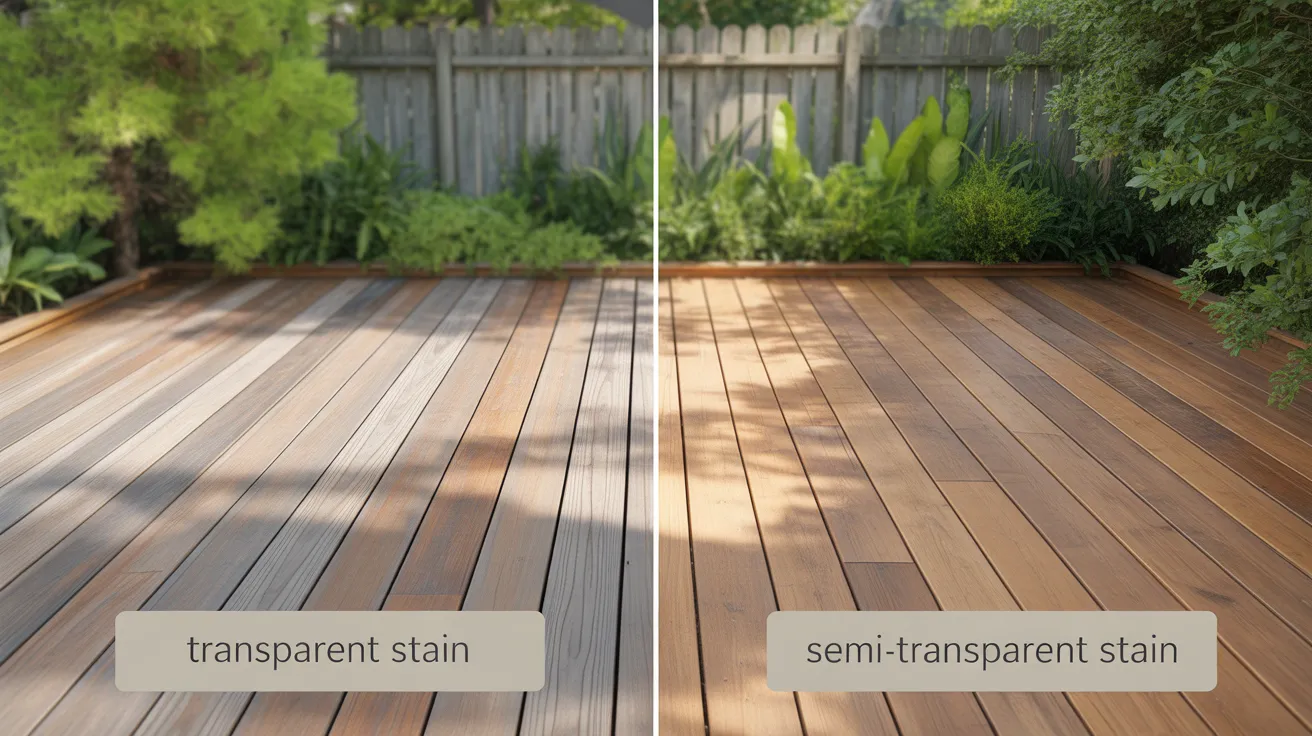
The right stain depends on your deck’s needs and your preferences. For new or high-grade wood, a transparent stain highlights its natural beauty.
For older or worn wood, a semi-transparent stain provides a more even, refreshed look.
Consider where your deck is. Semi-transparent stains hold up better in full sun or harsh weather, requiring less maintenance. Transparent stains work well in shaded areas but need more upkeep.
Finally, think about your style. Choose transparent for a natural wood look or semi-transparent for added color and coverage. It’s all about finding the right balance for your space.
Conclusion
Choosing between transparent and semi-transparent stain depends on your deck and needs.
Both options can look great; it’s about matching the stain to your wood, weather, and how much upkeep you want.
Transparent stains are great for a natural look, but require more frequent reapplication. Semi-transparent stains offer color and longer protection.
Consider your deck’s use, wood type, and sunlight. Keep it clean and touch it up as needed for the best results. You’ve got this!

